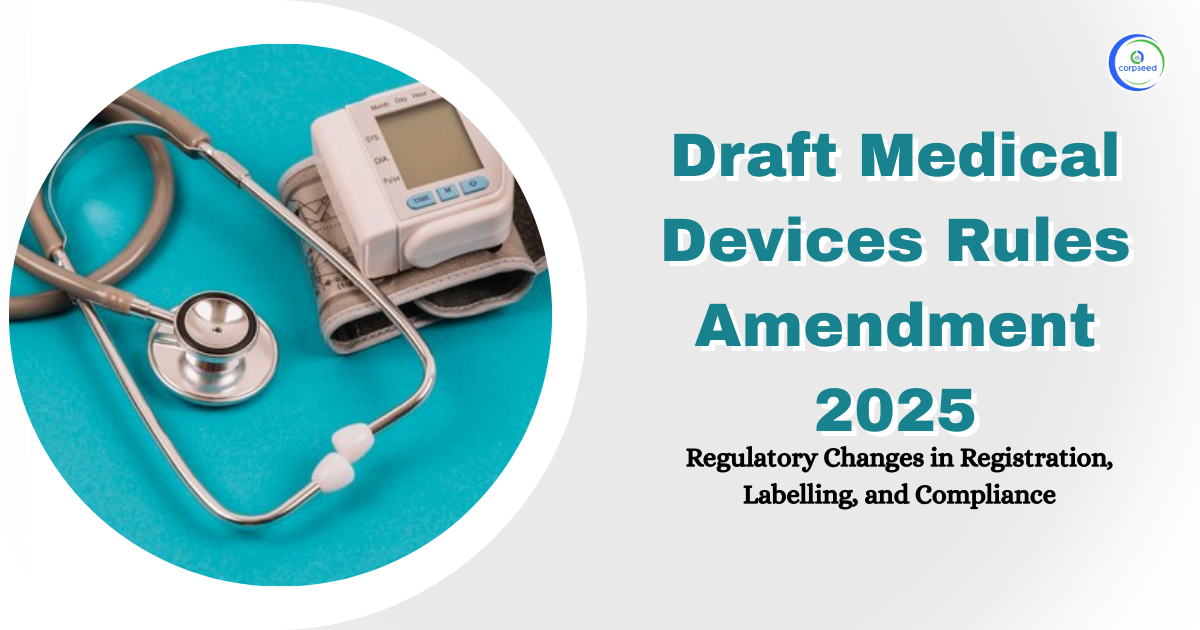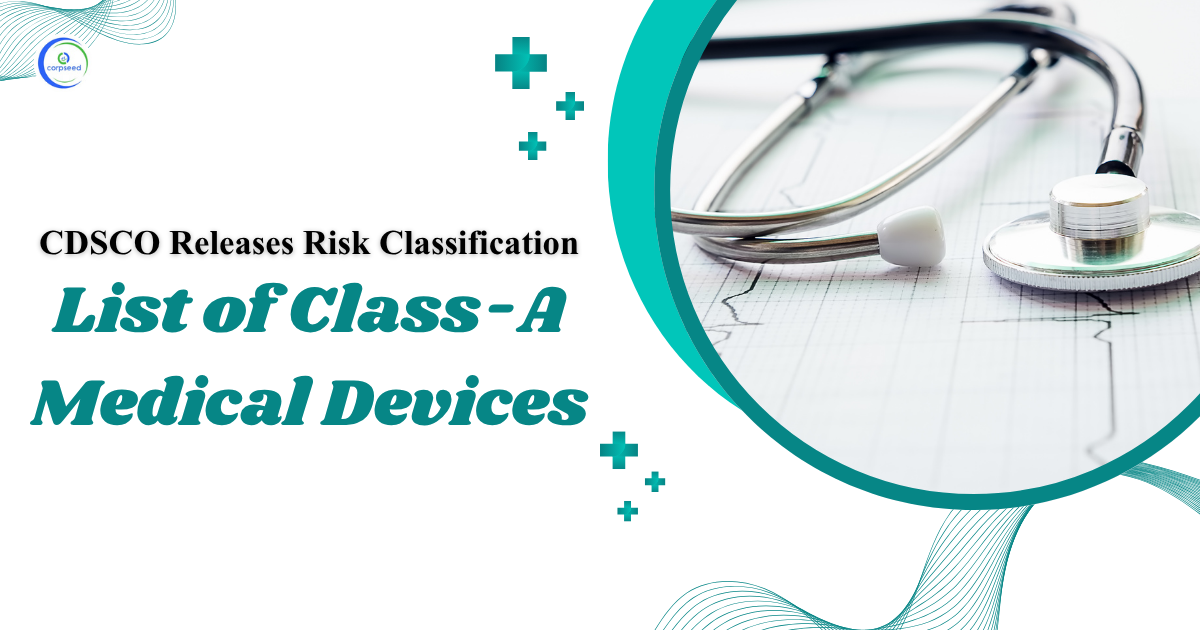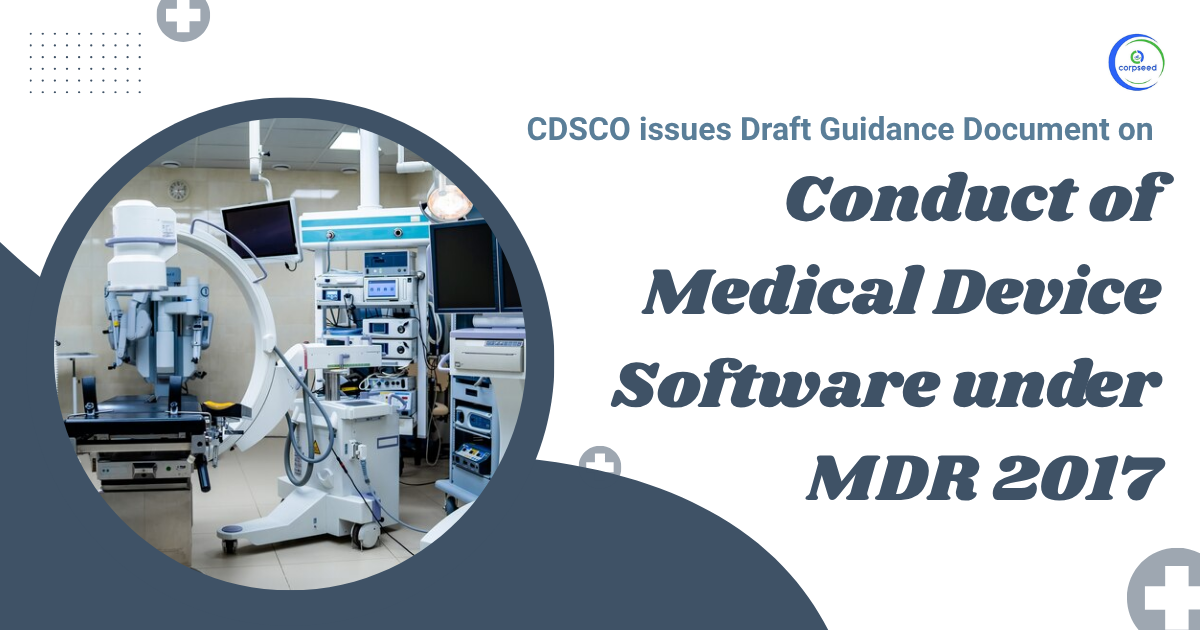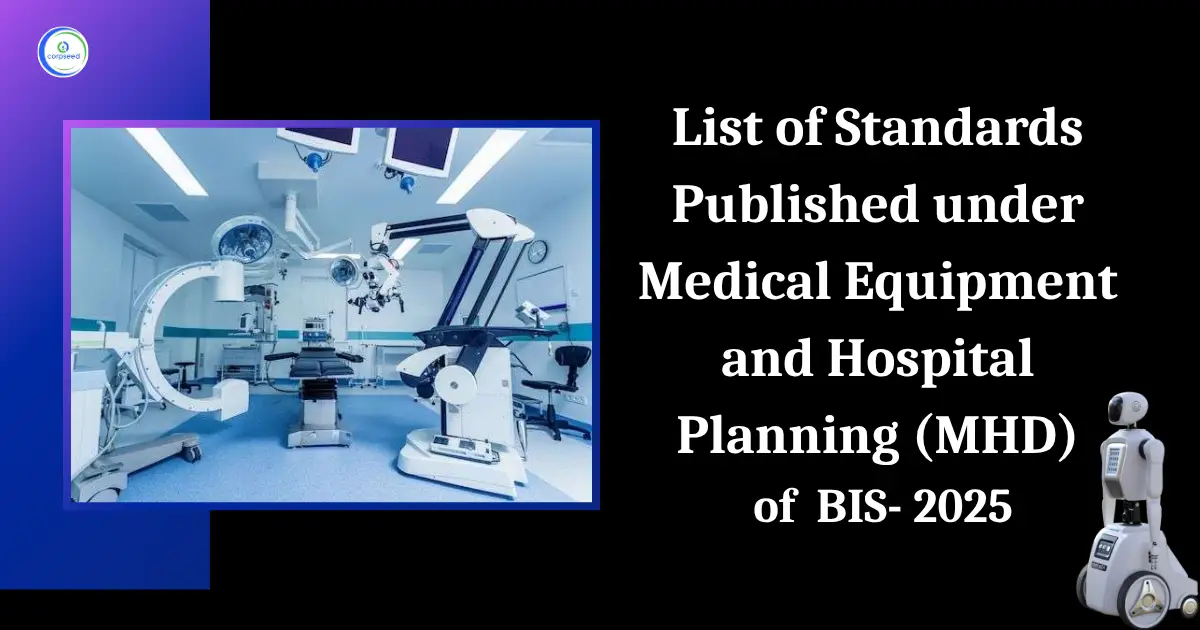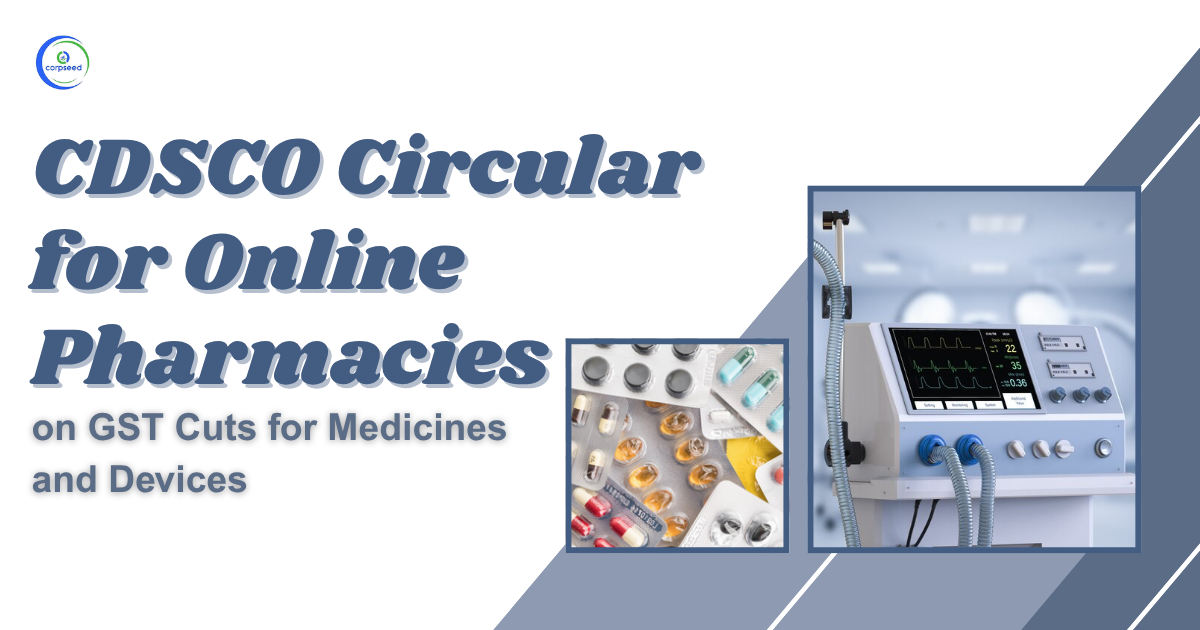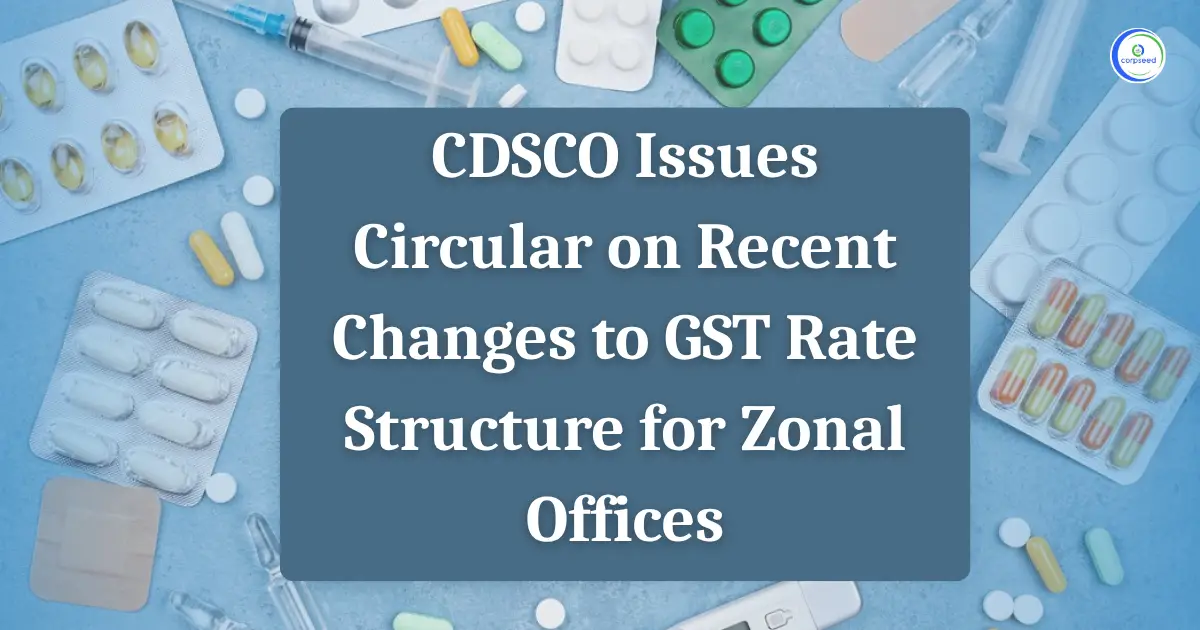A Brief Introduction of Physical Support
Physiotherapists provide movement and exercise, manual treatment, education, and counseling to those who have been injured, ill, or disabled. They support patients in managing pain and preventing disease, preserving health for people of all ages. The profession enables people to continue working while assisting them in maintaining their independence for as long as feasible. It also helps to foster development and support recuperation. Physiotherapy is one of the main physical support medical facilities.
Table of Contents
- A Brief Introduction of Physical Support
- What is a Medical Device?
- Types of Medical Devices in India
- Eligibility Criteria for Medical Devices Registration/Import
- Process & Fee for Medical Devices Registration
- Documents required to be attached
- Time Involved &Validity for Registration
- Re-registration or Renewal of the Registration Certificate
- Post-Compliances after receiving registration
- How to Register Any New /Additional Medical Device If Medical Device Registration Obtained Already?
--------------Blog Contact Form-------------
From the 1st of October 2022, the said medical devices having risk classes A and B will be covered under the licensing regime of CDSCO. Once the devices are under the scope of the licensing regime of CDSCO, all the importers and manufacturers of the said devices will have to apply for the license in order to sell their products in Indian Market.
The physical support category consists of a total of 37 medical devices which are classified on the basis of their risk class and intended use. Out of which only class A and class B medical devices will fall under the licensing regime from 1 October 2022. The CDSCO listed medical devices are as below mentioned
| Physical Support Medical Devices | |||
| S. No. | Name of the Medical Device | Intended use | Classification India as per First Schedule part- 1 MDR 2017 |
| 1 | Ankle continuous passive motion exerciser | Electrical device intended to continuously move the ankle joint (e.g., flexion, inversion/eversion) without patient assistance during continuous passive motion (CPM) exercise therapy usually following surgery or trauma to the joint. | Class B |
| 2 | Ankle/foot orthosis | Intended to encompass the ankle joint, or the ankle and foot, to support, align, prevent, or correct orthopedic deformities/injuries or to improve the function of the ankle and/or foot; it may also be intended to offload and redistribute foot pressures that affect pedal circulation to improve blood flow and help heal diabetic foot ulcers or postsurgical wounds. | Class A |
| 3 | Balance board | Intended to train patients with difficulties in balance (e.g., a paraplegic or a stroke victim) walks for balance training. | Class A |
| 4 | Bed traction frame | Intended to treat patients with fractures and other orthopedic disorders (e.g., of the lower or cervical spine, hip). | Class A |
| 5 | Body arch traction table | Intended to support the body of a patient and provide traction for the back muscles and spine by flexing the patient into a reverse supine body arch. | Class A |
| 6 | Canalith repositioning procedure chair, manual | Intended to treat balance disorders [e.g., benign paroxysmal positional vertigo (BPPV), canalithiasis] caused by displaced canals (otoconia) in the inner ear of the patient | Class A |
| 7 | Cervical spine collar | Intended to support or immobilize the cervical spine to treat deformities, fractures, sprains, or strains (often to treat whiplash resulting from an automobile accident). | Class A |
| 8 | Cervical spine immobilization head ring | Intended to be fixed to the skull of a patient at brow level using pointed, steel, threaded bolts (typically four) that are adjusted to penetrate the outer bone of the skull. | NA |
| 9 | Cervicothoracic spine orthosis | Intended to support or immobilize deformities, fractures, sprains, or strains of the cervicothoracic spine. | Class A |
| 10 | Cervicothoracic olumbosacral spine orthosis | Intended to encompass the cervicothoracolumbosacral spine region of the neck and trunk. | Class A |
| 11 | Chest-oscillation airway secretion clearing system | Intended to rapidly inflate and deflate against the chest wall of the patient for promoting airway clearance by creating high-frequency chest wall oscillation (HFCWO), resulting in the mobilization of bronchial secretions. | Class B |
| 12 | Collar and cuff arm sling material | Fabric and form composite material intended to immobilize forearm, elbow, humerus, or shoulder injuries. | Class A |
| 13 | Cranial orthosis | Intended to be worn on the head of an infant with an abnormal head shape (e.g., due to plagiocephaly, brachycephaly, scaphocephaly), or after craniosynostosis repair surgery, to apply pressure to the cranium and improve cranial symmetry/shape during growth over a period of months. | Class A |
| 14 | Elbow orthosis | Intended to encompass the elbow joint to support, align, prevent, or correct deformities/injuries or to improve the function of the elbow. | Class A |
| 15 | Finger orthosis | Intended to encompass the whole or part of the finger to support, align, prevent, or correct deformities/injuries or to improve the function of the finger. | Class A |
| 16 | Flotation therapy bed, adult | Intended to minimize pressure points on a patient's body by providing contact with as much of the body surface as possible, typically through a mattress that contains a large volume of constantly moving media, e.g., water, air, or mud that lifts the patient to simulate a floating effect. | Class B |
| 17 | Flotation therapy bed, neonatal | Intended to minimize pressure points on neonatal patient's body by providing contact with as much of the body surface as possible, typically through a mattress that contains a large volume of constantly moving media, e.g., water, air, or mud that lifts the patient to simulate a floating effect. | Class B |
| 18 | Foot orthosis | Intended to encompass the whole or part of the foot, or designed as a plantar insert, and intended to provide rigid or semi-rigid correction of the foot for persons with orthopedic deformities/injuries of the feet. | Class A |
| 19 | Hand orthosis | Intended to encompass the whole or part of the hand to support, align, prevent, or correct deformities/injuries or to improve the function of the hand. | Class A |
| 20 | Hand/finger splint | Intended to immobilize an injured hand to protect injuries to, e.g., the digits, metacarpals, and wrist during the healing process. | Class A |
| 21 | Hand/wrist continuous passive motion exerciser | A mains electricity (AC-powered) device is intended to continuously move the metacarpal/interphalangeal joints (e.g., flexion and extension) without patient assistance during continuous passive motion (CPM) exercise therapy usually following surgery or trauma to the joints. | Class B |
| 22 | Hip/knee continuous passive motion exerciser | A mains electricity (AC-powered) device Intended to provide continuous passive motion (CPM) exercise therapy for the hip and/or knee, typically following joint surgery/trauma to promote healing; some types may also operate with patient assistance under controlled active motion (CAM). | Class B |
| 23 | Horizontal non-powered traction system | Non-powered device intended to be attached to a table for the application of constant horizontal traction forces to the cervical or lumbar vertebrae by means of attached harnesses whilst the patient typically lies in a supine position on the table during treatment. | Class A |
| 24 | Incentive spirometer | Intended to be used in respiratory therapy to encourage and motivate deep-breathing maneuvers, typically for the postsurgical treatment and prevention of atelectasis (lung collapse) and to help facilitate airway opening and clearing. | Class A |
| 25 | Intermittent traction system | It is an AC-powered electronic device. Intended to apply and relieve pre-set traction forces from a motor through harnesses typically attached to the cervical or lumbar vertebrae. | Class B |
| 26 | Kinetic bed | Intend to enable continuous change of the patient's lying position, e.g., it can tilt the entire bed mattress support system (this includes the mattress, the framework that supports the mattress, and the bedding) lengthways, sideways, or to a near vertical tilt. | NA |
| 27 | Knee immobilizer | Intended to temporarily render the knee immovable, either preoperatively or following injury or arthroscopy. | Class A |
| 28 | Orthopedic bed | Intended to provide support for skeletal traction to stabilize fracture sites. | Class A |
| 29 | Pediatric dorsiflexion slant board | Intended to be used in the treatment of various medical conditions (e.g., congenital, neurological, post-traumatic) in pediatrics, where tendon tightness and muscle contracture affect the ability to dorsiflex the foot, possibly leading to an abnormal gait. | Class A |
| 30 | Parapodium walking frame | Intended to encompass and provide support for the body of a patient who is unable to stand unassisted to help them move (walk) by changing their center of gravity (COG). | Class A |
| 31 | Physical therapy massager | Electrically powered devices intended to provide therapeutic massage to a larger area than hand-held massaging devices. | Class B |
| 32 | Shoulder continuous passive motion exerciser | It is a mains electricity (AC-powered) device Intended to continuously move the shoulder joint (e.g., flexion, rotation, adduction/abduction) without patient assistance during continuous passive motion (CPM) exercise therapy usually following surgery or trauma to the joint. | Class B |
| 33 | Shoulder immobilizer | Intended to temporarily immobilize or limit abduction of the shoulder joint to support healing of an injury or a surgical wound. | Class A |
| 34 | Swivel-walker | Intended to encompass and provide support for the body of a patient who is unable to stand unassisted, to help them move (walk) by rocking sideways (shifting their weight from side to side with a shoulder movement) which makes the footplate of the device swivel so that it “walks” forward. | Class A |
| 35 | Toe separator | Intended to space the toes of the foot to relieve pain, pressure/friction between toes, and/or to facilitate the realignment of the toes to a natural position. | Class A |
| 36 | Traction table, line-powered | Intended to support a patient and to provide traction for the back muscles and spine (e.g., lumbar, cervical) by a motorized mechanical manipulation of the spine. | Class B |
| 37 | Wrist immobilizer | Intended to temporarily render the wrist immovable as therapy for non-displaced fractures, strains, sprains, and muscle injuries of the wrist. | Class A |
Central Drugs Standard Control Organisation:
India is growing as one of the nation's leading pharmaceutical businesses and is among the top ten nations in terms of the pharmaceutical industry. Several factors such as a large population, growing health awareness, affordable medical facilities, and better research facilities have given rise to the manufacturing and development of the pharma business in India. However, with the increasing scope for the growth of the pharma industry in India, there are possibilities for the sale/purchase of medical equipment & device illegally or without jurisdiction. Therefore, the Government of India has established the Central Drug Standards Control Organization (CDSCO), which is the primary legislative body and has been responsible for the regulation, control, and management of pharmaceuticals and medical devices in India apart from the appointment of the Drug Controller General of India (DCGI), and has conferred the responsibility of undertaking assessment, approval, and regulation of further compliances(import, export, sale, distribution) in the matters of medicinal drugs and medical devices(including any existing or any new) drugs/devices in accordance with the provisions of the Drugs and Cosmetics Act 1940.

What is a Medical Device?
According to the latest definition as provided under the Medical Devices Amendment rules 2020, as notified on 11.02.2020. However, taking care of circumstances the government has exercised its powers to include more categories by widening the scope of the definition of “Medical Device” under the Act. It states-
"Devices used in general medical practice such as medical apparatus, instruments, implants appliance, etc., which are either used individually or in combination, and are intended to be specifically applied for human beings or animals and are further intended to obtain the desired function by such means and for such purposes as provided below, but is not intended to meet the primary intended action on the human body or animals by any pharmacological or immunological or metabolic means-
- Analysis, prevention, observation, treatment, or mitigation of any disease or disorder;
- Analysis, observation, treatment, mitigation, or support for any injury or disability;
- Examination, replacement or alteration, or support in findings of the anatomy or a physiological process;
- For supporting or sustaining life;
- Decontamination of medical devices; and
- Conception-related equipment & devices.
Therefore, every manufacturer or importer of any medical device in India shall be required to obtain registration as per the provisions of the Drugs and Cosmetics Act 1940. Any failure to comply with the same may invite legal action including penalty & prosecution under the Act.
Types of Medical Devices in India
Provisions related to the import, manufacture, sale & distribution of medical devices are regulated under the provisions of the Drug and cosmetics Act 1945. Under the New Medical Rules 2017, all medical devices have been classified into four different categories depending on their usability & risk involved as provided below.
- Class A:- Low-risk devices like a thermometer, tongue depressors, etc.
- Class B:- Low moderate risk like Hypodermic Needles, suction equipment, etc.
- Class C:- Moderate high-risk devices like Lung ventilators, etc.
- Class D:- High-risk devices like Heart valves, implantable devices, etc.
Where Class A & B devices are considered to be less risky and moderate devices, for which the application to manufacture has to be filed to the State Licensing Authority. Whereas Class C &D are considered to be high and very High-risk devices and the application for these has to be filed to the Central Licensing Authority of India.
Eligibility Criteria for Medical Devices Registration/Import
The provisions related to activities such as Import, manufacture, sale and distribution of medical devices have been regulated under the provisions of the Drugs & Cosmetic Act 1940 & Rules 1945. Therefore, any person/firm/enterprise, etc. holding a wholesale drug license and/or manufacturing license issued under the Drugs and Cosmetics Act, 1940 and Rules 1945 could make an application for Registration and import of medical devices into India.
Process & Fee for Medical Devices Registration
Types of Medical Devices Registration
- Registration/Import of any existing medical device;
- Registration /import of any new medical device
Step 1: Determine Whether Your Medical Device Is Under Notified List or Not
The CDSCO authority has provided a list of notified medical devices that need to compulsorily obtain registration under the Drugs and Cosmetics Act 1940 and in accordance with Medical devices rules 2017. However, there may be any medical devices that have not been expressly notified by the CDSCO authority, or in the case of new medical equipment, the manufacturer/importer shall be required to obtain a NOC in such cases. For instance, Blood Grouping Sera Ligatures, Sutures, Staples Intra-Uterine Devices (Cu-T), Condoms, Tubal Rings, Surgical Dressing, Umbilical Tapes, Blood / Blood Component Bags do not need registration, whereas devices such as spinal needles, cochlear implants, syringes, and needles, heart valves, endotracheal tubes and catheters among others should undergo registration provides with the CDSCO.
Step 2: Appoint an Authorized Representative (in case of a Foreign Entity)
For a foreign business manufacturer entity, it shall be necessary to appoint an authorized business entity in India, who shall be the contact person for the inspection authorities during the process, assist in device approvals, registrations process, and vigilance adverse event reporting. The Indian Authorization should hold a wholesale drug license in forms 20B& 21B.
Step 3: Fill out the Applicable Form for Medical Device Registration
In the next step, the manufacturer/importer for MD shall be required to submit the registration form of a regulatory dossier, along with all the prescribed documents along with the prescribed fee on the CDSCO portal to the DGCI (Drugs Controller General of India) by logging on to the online CDSCO portal https://cdsco.gov.in/opencms/opencms/en/Home/ and signing into the portal.
Following forms along with applicable govt. fees have been provided below, which shall be required to be paid through payment challan-
| Applicant Type | Class of MD | Application Form | License Form |
| Importer | A,B,C,D | MD-14 | MD-15 |
| Manufacturer | A B | MD-3 | MD-5 |
| Manufacturer(Loan License) | A B | MD-4 | MD-6 |
| Manufacturer | C, D | MD-7 | MD-9 |
| Manufacturer(Loan License) | C, D | MD-8 | MD-10 |
However, in the case of new equipment or medical device-
| Application Type | Class of MD | Application Form | License Form |
| Importer Clinical Investigation | A,B,C,D | MD-22 | MD-23 |
| Import License | A,B,C,D | MD-26 | MD-27 |
| Test License(for importer) | A,B,C,D | MD-16 | MD-17 |
| Manufacturer (Clinical investigation) | A,B,C,D | MD-22 | MD-23 |
| Manufacturer License | A,B,C,D | MD-26 | MD-27 |
| Test License | A,B,C,D | MD-16 | MD-17 |
Further, each application shall be supported with the list of documents and the requisite fee as provided in the online portal of CDSCO-
| Type of License | Class of Device | Applicable Regulation | Govt. Fee |
|
For Manufacturing/Loan License
|
A or B; | 20(2) | Rs. 5000 Rs. 500 |
|
For Manufacturing/Loan License
|
C or D; | 21(2) | Rs. 50,000 Rs. 500 |
|
For Import License(other than IVD)
|
Class A | 34(2) | 1000 Dollar 50 Dollar |
|
Import License(other than IVD)
|
Class B | 34(2) | 2000 Dollar 1000 Dollar |
|
Import License (in IVD)
|
Class A or B | 34(2) | Rs. 1000 Rs. 10 |
|
Import License(other than IVD)
|
Class C or D | 34(2) | 3000 Dollar 1500 Dollar |
|
Import License(in IVD)
|
C or D | 34(2) | 3000 Dollar 500 Dollar |
Step 4: Obtain Certificate of Registration in Prescribed form
Once the application is submitted on the CDSCO portal, the DGCI registration authority may send a query through an inquiry letter to the manufacturer or from the authorized representative of the importer, along with the timeline within which the query should be answered, and sometimes, may also ask for a technical presentation On satisfaction the authority may issue a license in such form as provided in the above list. After obtaining registration, the manufacturer or his authorized representative may apply for an importer license.
Documents required to be attached
- Form 40
- ISO 13485 certificate
- Full Quality Assurance Certificate
- CE Design Certificate
- Undertaking that all information provided is authentic
- Either a Free Sale Certificate or Certificate from the Foreign Government
- Certificate of Marketability from GHTF (Australia, Canada, Japan, the European Union, and the United States);
- Plant Master Report
- Device Master File
Time Involved &Validity for Registration
If the DGCI doesn’t ask for a Technical Presentation or Subject Expert Committee (SEC) audit, it takes around 6-9 months to obtain a Medical Devices Registration. In cases where Technical Presentation or Subject Expert Committee (SEC) audit, is required, it may take additional 3-6 months.
Once obtained the Registration Certificate shall be valid for a total period of 3 years from the date of issue of registration unless suspended or canceled by the DGCI authority for proper causes.
Re-registration or Renewal of the Registration Certificate
The application for renewal of the MD registration certificate shall be made at least nine months from the expiry of the registration certificate. Though there are no additional requirements for the renewal of registration, it shall be necessary for the certificate holder to provide a copy of the Plant Master File (PMF) and Device Master File (DMF), where there are no changes in the PMF and DMF,
Post-Compliances after receiving registration
Though there are not many compliances in place about the registration certificate, it shall be compulsory for the certificate holder to-
- In case of any change that has taken place about the constitution of the firm and/or address of the registered office/factory premises, the MD manufacturer/authorized representative of the importer to intimate the licensing authority regarding the same in writing;
- In case any such change has taken place, the existing registration certificate shall be valid for a maximum period of three months from the date on which the change has taken place, and during this time, the manufacturer/authorized representative shall be required to obtain a fresh Registration Certificate;
How to Register Any New /Additional Medical Device If Medical Device Registration Obtained Already?
In case an importer wants to obtain registration for manufacturing of any additional manufacturing device, then such person shall be required to obtain an endorsement to the existing Registration Certificate along with the prescribed documents holding that manufacturing of an additional device is being undertaken in the manufacturing site as provided in the registration certificate along with a fee of 1000 dollars fee for each additional device.
Drug License
A drug license is an official permission granted to individuals or companies that manufacture, distribute, and sell drugs in India. It ensures adherence to the safety and quality standards of the regulatory authorities that ensure public health.
Medical Devices Import/Manufacturing
CDSCO online registration is a process that ensures that all the drugs, medical devices, and cosmetics in the market are safe, reliable, and must have passed quality standards. Importers, manufacturers, and others must register under the CDSCO for a certificate if they are working in this field.
Medical Devices Import
The CDSCO is responsible for medical device registration in India. This registration guarantees that all devices are safe, of high quality, and comply with regulatory standards. This registration not only protects patients but also supports global trade.
This portion of the site is for informational purposes only. The content is not legal advice. The statements and opinions are the expression of author, not corpseed, and have not been evaluated by corpseed for accuracy, completeness, or changes in the law.
BOOK A FREE CONSULTATION
Get help from an experienced legal adviser. Schedule your consultation at a time that works for you and it's absolutely FREE.




